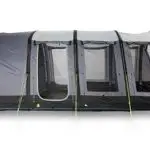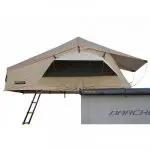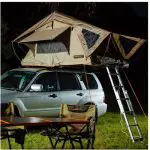There’s almost certainly no feature more important in a tent than its waterproofing. Leaking can facilitate the premature end of a family holiday, or can be downright dangerous when off the grid and far from help and shelter.
Manufacturers provide a waterproof rating for all external materials used in tent construction. Fortunately, this is provided in a standardised system called a Hydrostatic Head (HH) rating, which will be provided in millimetres. The test involves holding a tube vertically above the material, gradually filling the tube with water, and measuring at which point the water is in the tube when the material starts to leak. So if the tube fills to 2000mm before leaking, then this is the HH rating.
There’s almost certainly no feature more important in a tent than its waterproofing. Leaking can facilitate the premature end of a family holiday, or can be downright dangerous when off the grid and far from help and shelter.
Manufacturers provide a waterproof rating for all external materials used in tent construction. Fortunately, this is provided in a standardised system called a Hydrostatic Head (HH) rating, which will be provided in millimetres. The test involves holding a tube vertically above the material, gradually filling the tube with water, and measuring at which point the water is in the tube when the material starts to leak. So if the tube fills to 2000mm before leaking, then this is the HH rating.
A general rule is that 1000m should withstand showers (this is the minimum rating to be considered waterproof) while 2500m+ is recommended for heavy rain. Higher rated materials are also likely to provide waterproofing for longer, extending the life of your tent.
Tent flooring will usually come with a higher HH rating (ideally 3000mm – 5000mm) than the fly, as it is subjected to additional pressure from people standing and sleeping. The tent flooring waterproof rating is also key considering when you are planning on camping on sites with poor natural irrigation.
While there are many things to consider when assessing weatherproofing, such as construction quality, seam taping, and water run-off design, the HH rating is a great place to start to ensure the material itself will provide the waterproofing level you require.







